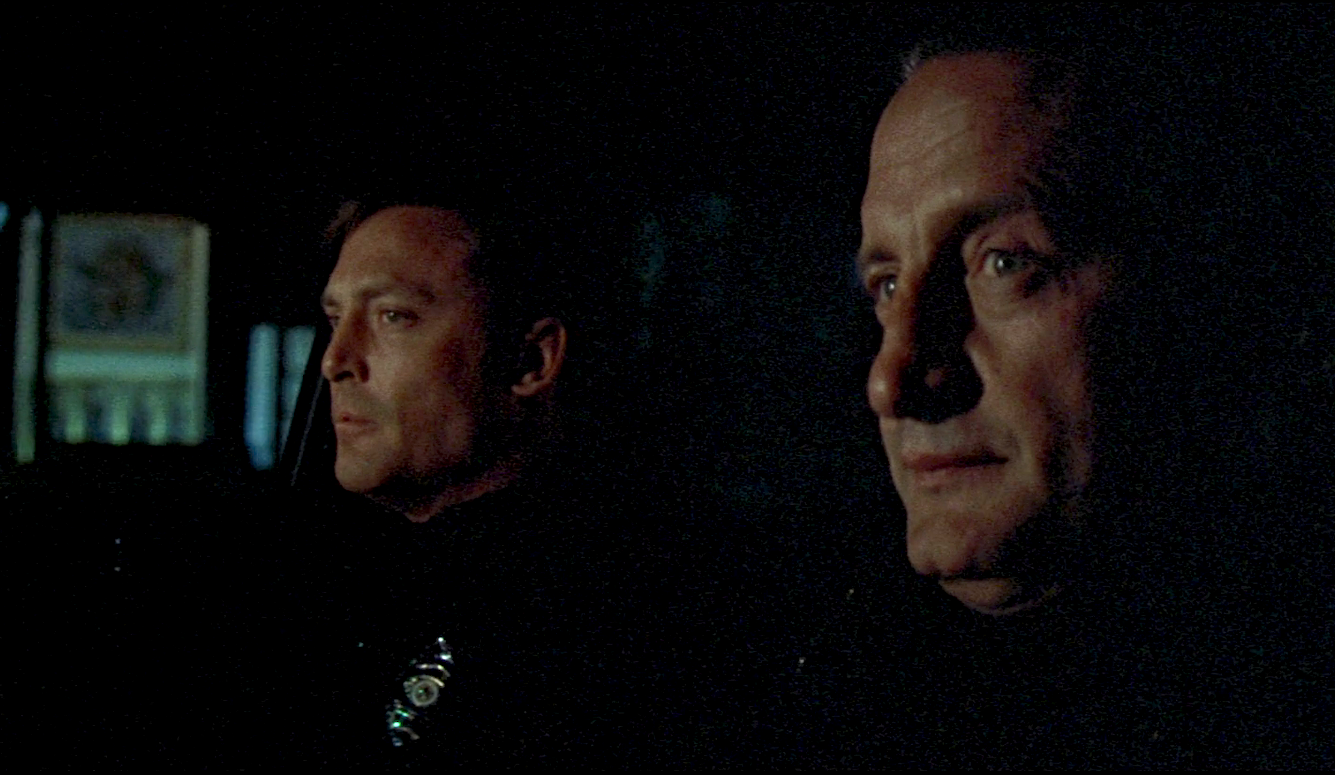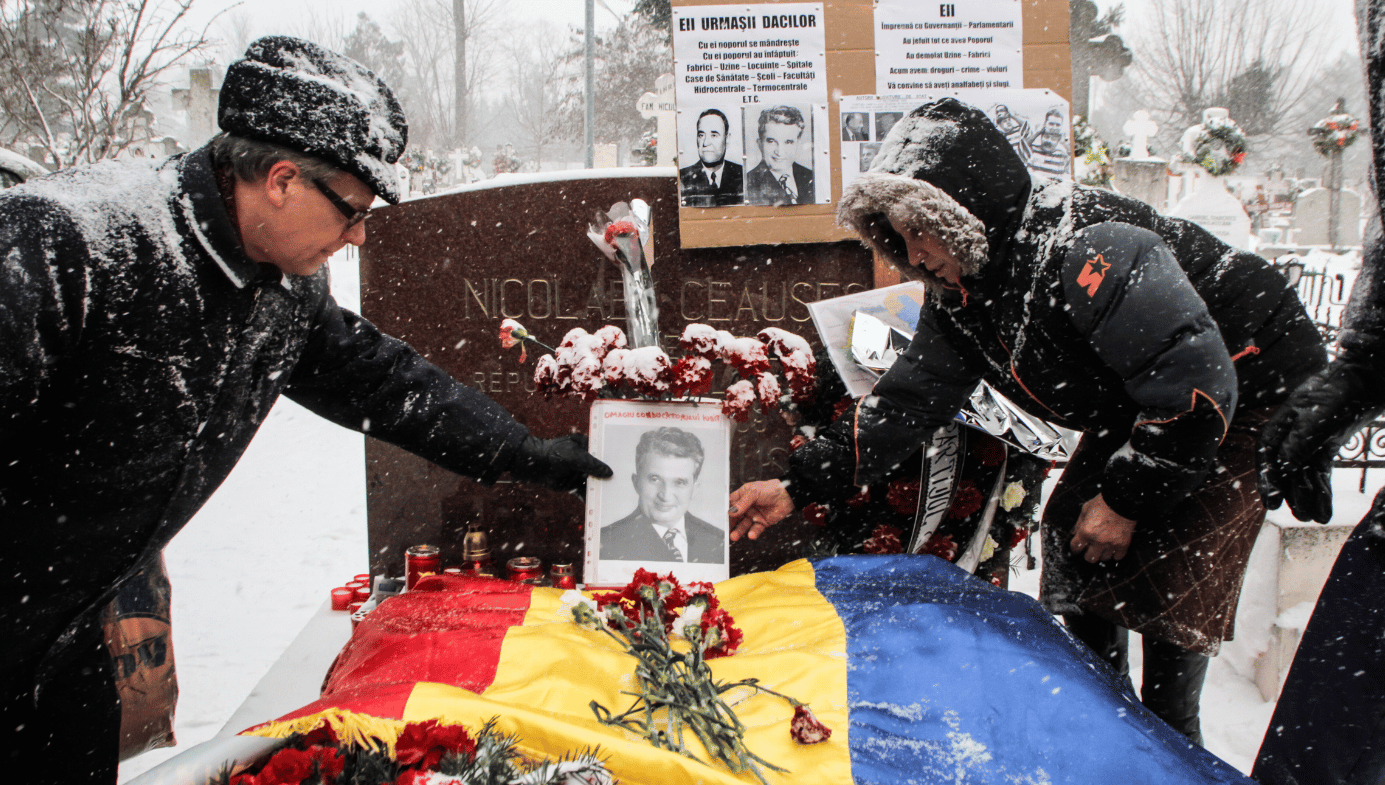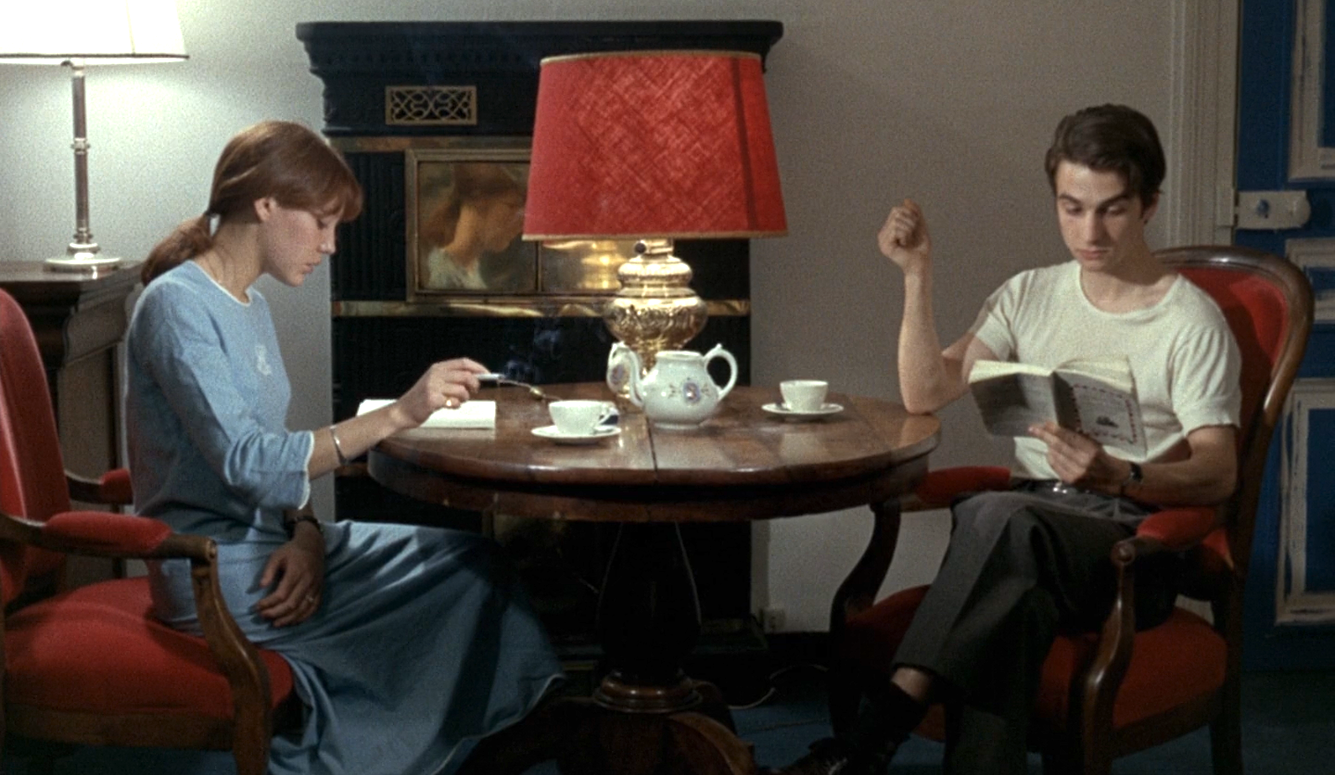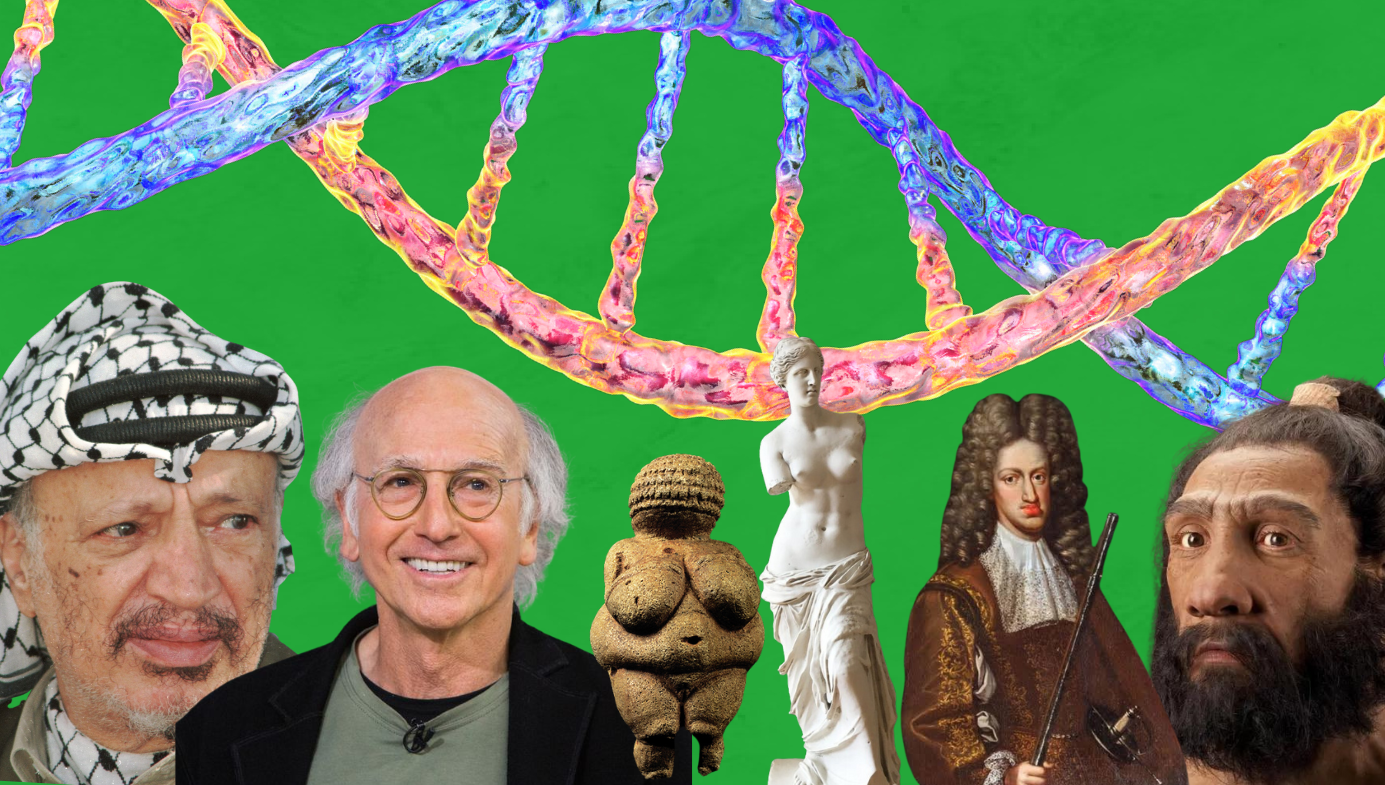The Man Who Invented the Modern Cop Novel
Joseph Wambaugh’s crime fiction has been much imitated but seldom equalled.

In 1971, at the age of 34, Joseph Wambaugh, published his first novel, The New Centurions, while he was still an officer with the Los Angeles Police Department. The story followed the fortunes (and misfortunes) of three LAPD rookie cops, all of whom joined the force together in 1960, the same year that Wambaugh did. The book was published in January, and by February 7th, it was the 10th bestselling work of fiction in the country. By March 28th, it had jumped to the third spot, surpassing Erich Segal’s Love Story, which had dominated the list for 57 consecutive weeks. Not until October 3rd—eight months after it first appeared on the list—did Wambaugh’s novel finally fall out of the top 10.
But The New Centurions was more than just a commercial blockbuster; it was also an important piece of American literature. And it remains as relevant today as it ever was. It is a story of police brutality, racism, public unrest, systemic rot, poverty, and the seemingly everlasting tension between American police departments and the communities they are supposed to protect and serve. Ernest Hemingway once declared that, “All modern American literature comes from one book by Mark Twain called Huckleberry Finn.” You could just as truthfully assert that all modern cop literature comes from one book by Joseph Wambaugh called The New Centurions. In fact, plenty of knowledgeable people have made that claim, including Michael Connelly, creator of the Harry Bosch novels, who wrote, “Joseph Wambaugh is the master of the modern police novel—no, scratch that, he invented the modern police novel.”
The New Centurions was unlike any crime novel published before it. Wambaugh’s mean streets were nothing like Raymond Chandler’s. Random acts of senseless violence rarely occurred in the novels of Chandler and his ilk. The criminals in classic crime novels generally have motives and make plans and think everything through in advance. The crime fighters in those books, on the other hand, generally solve every case. Wambaugh’s cops are faced with a starker reality. They are patrolmen. They don’t investigate murders. They take radio calls that send them off to referee domestic disturbances, street fights, bar fights, landlord/tenant disputes, and other types of disorder. They get called to the scene of plenty of thefts and robberies, and even a few murders, but they don’t solve these crimes. They take reports. They advise the victim (or his survivors) that he may never get any restitution. They lock down the scene until the detectives arrive, and then they move on to answer the next radio call.
Early on in The New Centurions, a veteran LAPD officer tells a trainee, “You’re going to find out before too long that we’re the only ones that see the victims. The judges and probation officers and social workers and everybody else think mainly about the suspect and how they can help him stop whatever he specializes in doing to his victims, but you and me are the only ones who see what he does to his victims—right after its done.” And what they see is often horrible. Re-reading it recently, I had to skip to the end of a scene that involved both child- and animal-abuse.
Wambaugh opens his narrative in August 1960, when his three protagonists are still just cops-in-training. He checks in with them every August through 1965. Anyone familiar with California history will know that the infamous Watts Riots (now sometimes referred to as an “uprising” or “rebellion”) took place in August of 1965. Many Americans, particularly middle-class whites, were taken by surprise, and Wambaugh’s entire project seems to have been to demonstrate that the violence didn’t arise suddenly or unexpectedly. Relations between the LAPD and the “Negro” community of Los Angeles had been tense for a long time.
As rookies, all three of Wambaugh’s protagonists are assigned to districts of LA mostly populated by impoverished minorities. They get an up-close look at just what a powder keg certain parts of the city are. The book so eerily foreshadows the unrest that followed the killing of George Floyd that I’m surprised so few (if any) cultural critics have referred to it in recent years. But that is probably just as well. If the kind of censors that have recently been bowdlerizing books by Roald Dahl, Ian Fleming, and Agatha Christie ever took a whack at censoring Wambaugh’s early work, they would likely leave no sentence unaltered. It is filled with the kind of racist language that was no doubt part-and-parcel of nearly every LAPD officer’s vocabulary back in the 1960s. Here’s a sample:
“I gotta transfer out of University,” said Rantlee.
“Why?”
“Niggers are driving me crazy. Sometimes I think I’ll kill one someday when he does what that bastard in the tow truck did. If someone would’ve made the first move those savages would’ve cut off our heads and shrunk them. Before I came on this job I wouldn’t even use the word nigger. It embarrassed me. Now it’s the most used word in my vocabulary. It says everything I feel … I’m finding myself agreeing with every right wing son of a bitch I ever read about. I wasn’t brought up that way. My father’s a flaming liberal and we’re getting so we hate to see each other anymore because a big argument starts.”
Wambaugh seemed to feel particular sympathy for the LAPD’s black cops, who were a tiny minority back then and who play only minor roles in his book. Lots of racist banter takes place every morning at roll call when the supervisor reads a summary of all the major crimes that took place on the previous watch. At one point, Wambaugh writes:
Gus glanced over at the two Negro officers who sat together near the front, but they laughed when the others did and showed no sign of discomfort. Gus knew that all the ‘down heres’ referred to the Negro divisions and he wondered if all the cracks about the crimes affected them personally. He decided they must be used to it.
Often the black cops in Wambaugh’s books seem forced to decide whether they are African Americans or cops, because the culture of the LAPD doesn’t allow them to be proud members of both tribes. I suspect that this dynamic still pertains in police departments across the US, which may explain why the Memphis cops who allegedly killed Tyre Nichols were all black. Even some of Wambaugh’s racist white cops decry the treatment of their black colleagues:
“I just talked to old Sam Tucker,” said Whitey with a deep sigh. “The old bastard gets lonesome there at the desk. We was academy classmates, you know. Twenty-six years this October. It’s tough on him being colored and working a nigger division like this. Some nights he feels pretty low when they bring in some black bastard that killed an old lady or some other shitty thing like that, and these policemen shoot off their mouth in the coffee room about niggers and such. Sam hears it and it bothers him, so he gets feeling low.”
Race and racism infuse nearly every page of the novel. Any attempt to clean it up would simply weaken Wambaugh’s whole point, which is that what happened in August 1965 should have been predictable to anyone who had spent any time inside the LAPD back in the early 1960s.
In 1972, The New Centurions was made into a film starring George C. Scott and Stacy Keach. The book also became a bestseller in paperback. But the cultural impact of the novel was larger than its official footprint. Although he got no money or credit for it, Wambaugh and his book were clearly the inspiration for the ABC TV series The Rookies, which debuted in 1972. Even today, more than a half century later, Wikipedia’s entry for The Rookies notes that, “The success of Joseph Wambaugh’s book, The New Centurions … had sparked interest at the time in a more realistic depiction and storytelling of the typical uniformed officer.”
Before Wambaugh burst on the scene, most TV crime shows were closer in spirit to the drawing-room mysteries of Agatha Christie than to the kind of gritty, realistic tales that have dominated TV ratings and bestseller lists for much of the last half century. Hill Street Blues, Homicide: Life on the Street, NYPD Blue, The Wire—all of these and many others owe a huge debt to the works of Joseph Wambaugh in general and Centurions in particular. Even today, the debt keeps adding up. The current ABC TV series The Rookie, starring Nathan Fillion, is basically just an updated version of The New Centurions, though, naturally, Wambaugh gets no official credit for it. That series has since birthed a spinoff, The Rookie: Feds, which applies Wambaugh’s format to a group of newbie FBI agents.
Many of these bastard offspring of Centurions are very good. The Rookie, in particular, does an admirable job of highlighting the racism and sexism and brutality that still occasionally mar the operations of the LAPD. But none of these intellectual properties has yet surpassed the grittiness or authenticity of Wambaugh’s original. Even if it had been the only book he ever published, The New Centurions would have cemented Wambaugh a permanent place in American cultural history. But he was just getting started.
Thirteen months after the publication of The New Centurions, Wambaugh returned with The Blue Knight. Published in February of 1972 and set in 1971, it covers just three days in the life of Los Angeles Police Department Officer William “Bumper” Morgan. Born in 1921, Morgan joined the force in 1951, following an eight-year career in the military. He is now just 72 hours away from completing 20 years of service on the LAPD, after which he can retire and collect a pension equal to 40 percent of his monthly pay, every month for the rest of his life. He plans to leave LA, marry his college professor girlfriend, Cassie, and move to San Francisco, where a cushy job awaits him as head of security for a large and profitable corporation. But getting through those last three days will not be easy. Bumper is reckless and loves butting heads with real criminals.
The Blue Knight spent 17 weeks on the New York Times bestseller list, climbing as high as the sixth spot. Like its predecessor, it was quickly snatched up by Hollywood. In 1973, it was dramatized as a four-part TV miniseries broadcast over consecutive evenings in prime time. William Holden, who played Bumper Morgan, earned an Emmy Award for his performance. In December 2022, film director Whit Stillman (The Last Days of Disco) noted on Twitter, “If memory serves, the Joseph Wambaugh mini-series, The Blue Knight, was perhaps the beginning of Quality TV.” The miniseries was re-cut and released in Europe as a theatrical film. In a 2012 reassessment of the film, a reviewer for Time Out magazine called it “seminal stuff” and noted that the TV series had had a “tentacular influence over subsequent developments in US police representation…” The miniseries was spun-off into a regular dramatic series, which starred George Kennedy and aired on CBS for 23 episodes in 1975 and 1976.
Wambaugh’s third book, The Onion Field, was a departure for its author—a nonfiction work about the notorious kidnapping, in March 1963, of two LAPD plainclothes officers, one of whom was also murdered. Reviewing the book for the New York Times in 1973, James Conaway wrote:
Wambaugh is obviously indebted to Truman Capote—who, in 1965, demonstrated his skill in applying a novelist’s techniques to a true crime narrative. Both “In Cold Blood” and “The Onion Field” involved a prodigious amount of research, and are equally compelling. Wambaugh takes greater liberties with his characters and he lacks Capote’s neatness. But in terms of scope, revealed depth of character, and dramatic coherence, this is the more ambitious book.
The book spent 14 weeks on the New York Times non-fiction bestsellers list in late 1973 and early 1974, rising as high the fourth spot.
In 1975, Wambaugh published his third novel (and fourth book), The Choirboys, which many people consider to be his masterpiece. Up until that time, Wambaugh had written primarily in a realistic mode. His books were often very critical of the LAPD and didn’t shy away from the racism, homophobia, and brutality endemic in the department, but they were also pretty straightforward accounts of life as an LA cop. And they didn’t preclude the possibility that some LAPD officers were actually pretty decent human beings. Virtually none of the cops in The Choirboys is a decent human being. To varying degrees, they are all corrupt, dishonest, violent, racist, homophobic, sexist, and brutal. It isn’t a coincidence that Wambaugh retired from the LAPD a year before the novel’s publication. It’s unlikely he could have published The Choirboys and remained in good standing with his superiors and colleagues.
But Wambaugh’s retirement wasn’t motivated entirely by a desire to write more freely and frankly about the LAPD. In 1973, NBC debuted a new anthology TV series called Police Story. It was created by Wambaugh and became a hit, running for a total of six seasons and 98 episodes. This series, and Wambaugh’s many promotional appearances on The Tonight Show and other TV chat programs, made the ex-cop a household name in America. People began calling up the LAPD and asking if Joseph Wambaugh could personally come out and investigate the matter of their stolen bicycle or their noisy neighbor or their smashed car window. Aspiring scriptwriters would show up at Wambaugh’s station house and drop off scripts they hoped he would consider for use on Police Story. Others brought fat manuscripts of their crime novels and dropped them at the front desk, with a note addressed to Wambaugh. Criminals that Wambaugh arrested on the street would ask for his autograph. Even fellow cops began rushing to open doors for him or fetch him coffee.
By 1974, Wambaugh realized that his celebrity had made it impossible to do his job as a cop. Reluctantly, he resigned. (Wambaugh wasn’t the first member of the LAPD to give up police work for the entertainment world; Star Trek creator Gene Roddenberry spent seven-and-a-half years with the LAPD before leaving to focus fulltime on a career as a TV writer and producer. The character of Mr. Spock was reputedly based on former LAPD Chief William H. Parker, under whom both Roddenberry and Wambaugh served.) Published in late 1975, The Choirboys debuted on the New York Times bestseller list on November 30th. Despite its late start, the book would go on to be the fifth bestselling novel of 1975.
By late 1975, Wambaugh had produced four of the decade’s best books, and yet he remained largely ignored by the serious literary crowd. John Leonard, as editor of the New York Times Book Review, was a high-ranking member of that crowd, and the fact that he chose to review The Choirboys himself, suggests that he, at least, had some notion of just what a cultural juggernaut Wambaugh had become. Alas, Leonard’s reviews were often marred by his heavy-handed attempts to impress others with his wit and style, which were rather weak instruments.
The Choirboys, Leonard wrote, felt “as though ‘Catch-22’ had been written by Popeye Doyle.” Presumably this was meant as high praise, but why drag a fictional cop (based on actual NYPD officer Eddie Egan) into the mix in order to praise an actual cop? Why not simply report that (now former) LAPD officer Joseph Wambaugh has written a black comedy every bit the equal of Catch-22? Leonard went on to say, “Very little in Wambaugh’s first two novels prepares one for the scabrous humor and ferocity of ‘The Choirboys.’” That sounds good, but then he has to ruin it with another attempt at humor:
“The New Centurions” (1971) and “The Blue Knight” (1972) were bittersweet slices of naturalism, Hamlets on wry crisp, as if to elaborate the extenuating circumstance that cops, too, have feelings and may often be the victims of their particularity. In “The Choirboys” Wambaugh comes on like Celine derailed along the laugh-track. His characters are a brutalized M*A*S*H unit. Their giggle is a kind of howling, most of which can’t be quoted in a family newspaper.
It’s difficult to make much sense of this word salad (“Their giggle is a kind of howling”?). Leonard seems to be laboring to make a play on the phrase ham-on-rye but there is very little Hamlet-like about Wambaugh’s cops. Rather than being crippled by indecision, they make one bad decision after another. Yeats could have been writing about Wambaugh’s choirboys when he noted that “the worst are full of passionate intensity.” As for “Celine derailed along the laugh-track,” well, you’re on your own with that one. I’m more familiar with the M*A*S*H franchise than I am with the works of Celine, and here Leonard seems to be on firmer ground. What The Choirboys did for American big-city police departments is comparable to what Robert Altman’s 1970 film M*A*S*H did for the American military: expose the incompetence, stupidity, and brutality that marred their often noble missions.
At any rate, the fact that an intellectual snob like Leonard wanted it known that he had read all three of Wambaugh’s novels is telling. By the mid-’70s, Wambaugh occupied an interesting position in American letters—too dark and disturbing to be fully embraced by the mystery establishment, but too much of genre writer to be fully embraced by the literary elite. In 1970, the Mystery Writers of America awarded its Best Novel prize to Dick Francis’s Forfeit. Over the next decade, Wambaugh would completely alter the American crime-writing landscape. Today, crime-writing giants like Michael Connelly and James Ellroy readily acknowledge the debt they owe to Wambaugh. But it took a long time for his influence to be recognized by the establishment.
By 1981, Wambaugh had published five novels (six, if you count The Onion Field), but the MWA awarded the Edgar for Best Novel to Dick Francis’s Whip Hand. At some point in his career, Wambaugh should probably have been recognized with a Pulitzer Prize for his work, and yet he had trouble gaining recognition even from the MWA. To this day, not only have none of his 16 novels been honored with an Edgar Award, not one has ever even been nominated for the prize! The MWA has twice awarded Wambaugh a nonfiction Edgar (for The Onion Field, in 1974, and Fire Lover, in 2003), and once awarded him an Edgar for Best Motion Picture Screenplay (for The Black Marble, in 1981).

In 2004, Wambaugh received the MWA’s highest honor, the Grand Master Award. But the fact that his novels have garnered no awards—either from mainstream-literary bodies or mystery-fiction guilds—indicates just how difficult his accomplishments are to place in American literature, and how under-appreciated they remain.
Back in the 1970s, I attributed the greatness of Wambaugh’s books to the fact that the author had actual experience as a police officer. I assumed that, as more police officers took up writing fiction, we would move into a golden age of gritty police procedurals. It never really happened. Nowadays, bookstore shelves groan under the weight of novels written by cops or ex-cops. But none of those writers has come close to accomplishing what Wambaugh did in just his first five years as a professional (but part-time) writer. Here’s editor and publisher Otto Penzler, founder of the Mysterious Press, writing in the New York Sun:
American police writers must pay obeisance to Joseph Wambaugh, who showed what it was really like to spend your life in a uniform. James Ellroy credits the former cop with giving him direction, and there can be little doubt Wambaugh also influenced such superstars as Michael Connelly (whose Harry Bosch is in the pantheon of all-time great detectives), John Sanford (whose Lucas Davenport regularly and deservedly makes the best-seller list), and James Patterson (whose Alex Cross series are among the best-selling books of all time).
In an influential 1989 essay for Harper’s titled “Stalking the Billion-Footed Beast,” Tom Wolfe noted that, at some point in the mid-20th century, serious American literary novelists stopped paying much attention to life as it is actually lived by most ordinary Americans (whom he dubbed the “billion-footed beast”) and began playing postmodern games in the manner of John Barth’s Chimera and Ronald Sukenick’s Up. Wolfe quoted John Hawkes, another postmodernist, who once wrote that, “I began to write fiction on the assumption that the true enemies of the novel were plot, character, setting, and theme.” Wolfe disliked this trend. He believed highbrow literary types had ceded the field of realistic fiction to writers of more commercial fiction:
In many years, the most highly praised books of fiction have been overshadowed in literary terms by writers whom literary people customarily dismiss as “writers of popular fiction” (a curious epithet) or as genre novelists. I am thinking of novelists such as John le Carré and Joseph Wambaugh. Leaving the question of talent aside, le Carré and Wambaugh have one enormous advantage over their more literary confreres. They are not only willing to wrestle the beast; they actually love the battle.
Alas, by 1975, Wambaugh had pretty much drained his reservoir of personal experiences that could be turned into bestselling fiction. At that point, he noted in 2005, “I was forced to do research in order to collect fresh anecdotes and ideas for my fiction.” Consequently, his work lost some of its immediacy. But the transformation wasn’t all bad. Wambaugh’s plots became a bit more inventive and he began expanding his subject matter and its geographical territory. His novels still regularly roosted on the bestsellers list for weeks at a time, but they no longer seemed groundbreaking.
Wambaugh’s work can be divided (somewhat unevenly) into three distinct phases. Phase one only lasted from 1971 until 1975, but it produced four masterpieces: The New Centurions, The Blue Knight, The Onion Field, and The Choirboys. Phase two was the longest of his career. It began with the publication of The Black Marble in 1978 and ended in 1996 with the publication of Floaters. Wambaugh published eight novels in this period, all of which were good but none of which was great. Probably his best book during this period was 1989’s The Blooding, a gripping nonfiction work about the search for a man who, in the early 1980s, raped and murdered two 15-year-old girls near the English village of Narborough. The case drew international attention because it was the first in which the police used DNA evidence to solve a murder.
After the publication of Floaters, Wambaugh seemed to have retired. He didn’t produce another book until Fire Lover, in 2002, which was the longest gap of his career. Fire Lover, which tells of the years-long effort to catch and convict the most prolific arsonist in California’s history, doesn’t seem to belong to any particular phase of his career. Like his phase one books, it is set primarily in Los Angeles County and includes a lot of police work. Like his phase two books, it involved a lot of research, occasionally strays from LA into other parts of California and includes a lot of characters who are not cops. He spent years working on it and may have intended it as a final career-capping achievement. It won him another Edgar Award for nonfiction and it is one of the most gripping books he ever wrote. Had it been a career-capper, it would have been an excellent one.
But a few years later, novelist James Ellroy (L.A. Confidential) talked Wambaugh out of retirement. In the late 1990s and early 2000s, an investigation into the LAPD’s Rampart Division uncovered widespread corruption and wrongdoing among the officers involved in a program called CRASH (Community Resources Against Street Hoodlums). Numerous officers involved in the program were accused of planting evidence, shooting and beating suspects without provocation, dealing drugs, robbing banks, perjuring themselves, covering up crimes, and other unlawful activities.
Ultimately, two dozen officers were found to have been involved in criminality. The investigation resulted in 106 previous criminal convictions being overturned. It also prompted more than 140 civil lawsuits, which cost the city roughly $125 million in payouts. This episode inflicted such reputational damage on the LAPD that, in 2001, the US Department of Justice imposed a federal consent decree on the LAPD, which required the department to make numerous reforms to its operational procedures and gave the federal government wide-ranging authority to enforce the implementation of those reforms.
The decree was lifted in July 2009, but during those eight years, the LAPD underwent dramatic changes. Nearly 1,700 officers left the force (mostly to go to work for smaller and less beleaguered forces). An effort was made to make the LAPD look, at every level, more like the community it served. More minorities and women were brought on board, and more of them were promoted to higher ranks than ever before. Many of these reforms were uncontroversial and highly successful. But some cops—especially longtime veterans—complained that so many restrictions had been placed upon how and when they could use force against a suspect that it had made the job infinitely more dangerous.
James Ellroy apparently believed that Wambaugh was the only writer with the skill and experience to capture this period of transition in a novel, and between 2006 and 2012, Wambaugh wrote five of them, each centered around the LAPD’s Hollywood Station. The first book in the series was published when Wambaugh was 69. The last when he was 75. After that he retired for good. Amazingly, these last five novels are pretty much the equal of his first five books. I’m not the only one who thinks so. Of Hollywood Station, Marilyn Stasio, longtime crime fiction reviewer for the New York Times (and occasional naysayer of Wambaugh’s work), wrote:
It’s a serious pleasure to have Joseph Wambaugh back in Los Angeles and writing another blisteringly funny police procedural about the LAPD. While it may have taken him a couple of decades to get his mojo back, after some half-baked books set elsewhere in Southern California, Hollywood Station has all the authority, outrage, compassion and humor of the great early novels (like “The New Centurions” and “The Choirboys”) this one-time cop wrote in the 1970s.
The formula is familiar, but it still rocks.
In fact, the Hollywood Station novels seem to be in constant communication with those great early novels. Wambaugh’s centurions, knights, and choirboys were all mostly white, working-class men who lacked a higher education and, often, had served in the military. In comparison with those men, the cops in the Hollywood Station series seem to come from an alternate universe. They spend a lot of time worrying about how to pump their breast milk when they are out on patrol. They worry about their gun belts rubbing against their navel rings and irritating the flesh. They worry about bleaching the tips of their hair and getting into the Malibu surf in time to enjoy the “evening glass.”
Before frisking a transsexual female, they ask if she is pre-op or post-op. If pre-op, she’ll be frisked by a male cop. If post-op, she’ll be frisked by a female cop. These 21st-century cops are also, for the most part, much less likely to utter racist epithets or use any kind of force on a criminal suspect. They aren’t necessarily better people than Bumper Morgan (though, thankfully, most of them are), but they are under a microscope to a degree that Morgan couldn’t have conceived. Everywhere they go, they encounter people with camcorders or cell phones or some other device that might capture the slightest instance of police misconduct. What’s more, thanks to the consent decree, LAPD’s Internal Affairs Group (IAG) is actively trying to weed out bad officers with tactics that, were they used against a suspected criminal, would be deemed entrapment. One officer notes that, “Being an LAPD cop today is like playing a game of dodgeball, but the balls are coming at us from every-fucking-where.”
I noted that The Rookie, starring Nathan Fillion, owes a great deal to The New Centurions. But it seems to owe even more to Wambaugh’s Hollywood Station books. Fillion plays John Nolan, a former building contractor from Foxburg, Pennsylvania. Foxburg is located about a 90-minute drive from Wambaugh’s old hometown of East Pittsburgh. After moving to LA and joining the force, Nolan decides to go back to school at the age of 45, hoping that a college degree will improve his chances of promotion.
The creators of The Rookie may have gotten that idea from a character in Hollywood Station named Andi McCrea, of whom we are told, “With her forty-fifth birthday right around the corner and her oral exam for lieutenant coming up, it had seemed important to be able to tell a promotion board that she had completed her bachelor’s degree at last…” Angela Lopez, one of Nolan’s co-workers (played by Alyssa Diaz), is a nursing mother during season four of The Rookie, and has a difficult time pumping and storing her breast milk at work. Twelve years before The Rookie debuted, Budgie Polk, in Hollywood Station, experienced a similar ordeal.
In The Rookie, all of the patrol officers refer to their police vehicles as their “shop.” I first learned about this little bit of terminology in Hollywood Station. The Rookie doesn’t come close to committing plagiarism. None of its characters appear to be based specifically on any Wambaugh characters. But if, as I suspect, the creator of The Rookie, Alexi Hawley, studied Wambaugh’s work while putting together his own version of the LAPD, he made a smart move. No writer has ever captured the LAPD better than Wambaugh. Most good novels, films, and TV shows about the LAPD seem to have been created and written by people familiar with his books.
Throughout his career, Wambaugh has been able to capture his particular segment of the California mosaic with wit, clarity, and accuracy. No one ever wrote better about California’s cops and crooks and those caught in the crossfire between them than Wambaugh did. In the forest of California literature, Wambaugh is a giant sequoia. Let’s hope the bowlderizers never get a chance to chop him down.











